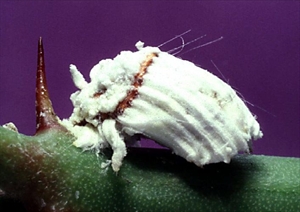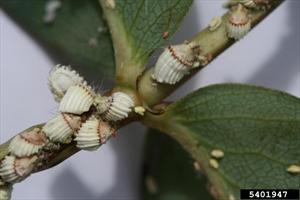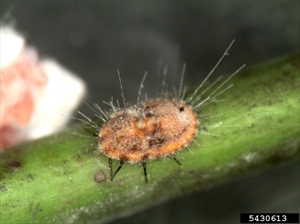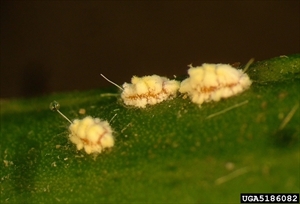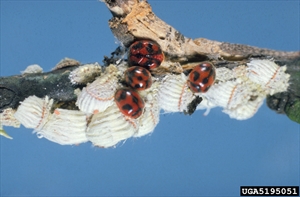- Worldwide distribution. On many woody plants, trees, ornamentals and weeds. Important, potentially devastating on citrus.
- Damage: (i) sucks sap, leaves wilt, stems dry, and shoots dieback, (ii) honeydew drips onto foliage which is blackened by sooty moulds.
- Adult (females) up to 7 mm long, covered in yellow or white wax, with orange-red, yellow, brown body. They are hermaphrodites; fertilised eggs kept in fluted egg sac. Males winged, and rare.
- Spread by 'crawlers' (nymphs) walking, or carried by wind, vehicles, animals, birds, on clothes, and the trade in plants.
- Natural enemies: predators, e.g., ladybird beetle, Rodolia cardinalis, and fly parasitoid (Cryptochaetum).
- Cultural control: nursery stock free from scale; if present, prune and spray (see below); in field, provide adequate nutrition.
- Chemical control: spot-spray infestations with soap solution, horticultural or white oils (see Fact Sheet no. 56); avoid malathion and synthetic pyrethroids - they will kill natural enemies. Use pyrethroids against ants.
